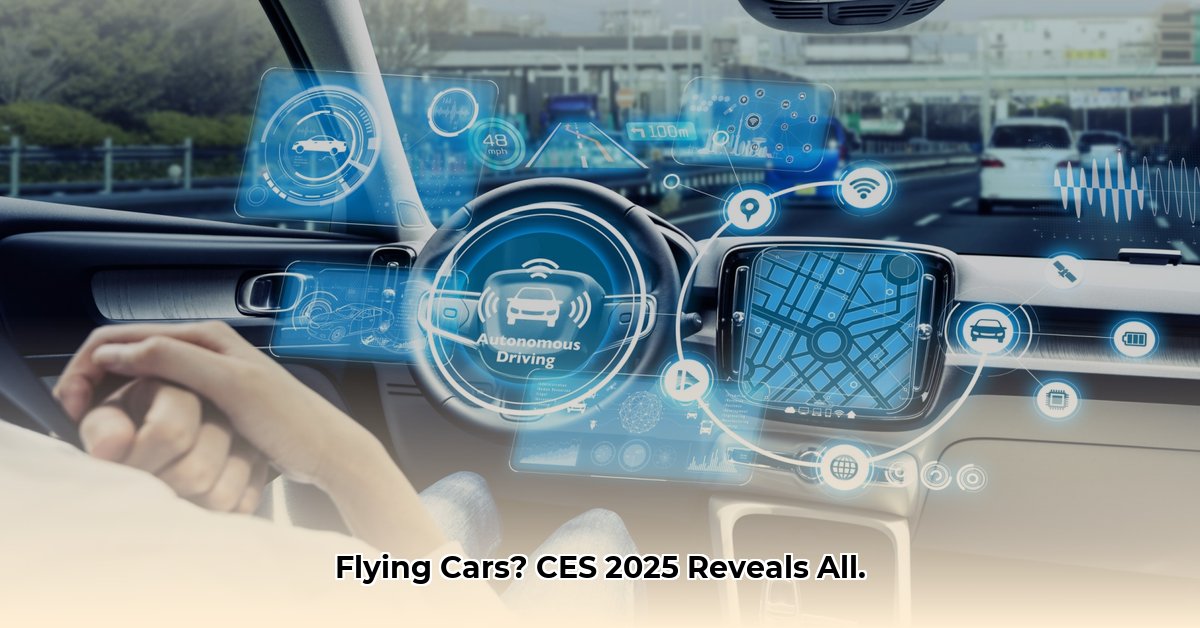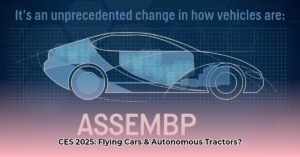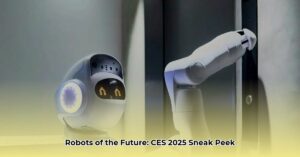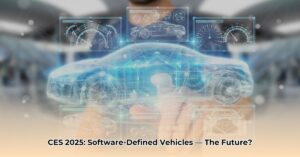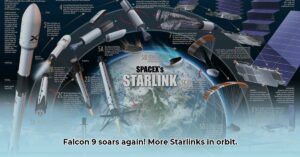The Dawn of Autonomous Everything?
CES 2025 showcased a diverse range of self-driving innovations, from flying cars and robot tractors to AI-powered EVs and smart tires. This wasn’t just about cars; it was a glimpse into a future where autonomy transforms how we move people and goods. While challenges like regulation and safety remain, the sheer breadth of advancements suggests the self-driving revolution is gaining serious momentum.
Xpeng’s Flying Car Makes a Splash
Xpeng Aeroht’s “Land Aircraft Carrier” stole the show, a six-wheeled electric vehicle with a detachable top section that transforms into a flying car. With a hefty price tag between $200,000 and $300,000 and 3,000 pre-orders primarily from China, it remains to be seen whether this is a practical solution or a luxury toy. Some analysts suggest this technology might eventually revolutionize urban mobility, but others remain skeptical, citing airspace regulations and safety concerns. A 2026 launch is planned.
Honda Electrifies with AI and Speed
Honda’s “0 Series” EVs—a saloon and SUV—impressed with Level 3 autonomy, powered by the Asimo OS and advanced AI chips. These vehicles suggest a future of streamlined, screen-heavy driving experiences, with cameras replacing traditional mirrors and a minimalist digital dashboard. A targeted 300-mile range and a 2026 North American debut could mark a significant step towards mainstream EV adoption.
Sambo Motors’ Hybrid Air Taxi Takes Off (Vertically)
The HAM III-2 hybrid air taxi from Sambo Motors Group uses battery power for vertical takeoff and hydrogen fuel cells for horizontal flight. With US flight tests scheduled for early 2025, this innovative approach may offer a glimpse into the future of urban air mobility, though questions about infrastructure and scalability still loom.
Aptera’s Solar EV Shines Bright
Aptera’s production-ready solar EV promises up to 40 miles of daily range on solar power alone, complemented by a 1,000-mile battery range option. This intriguing combination could significantly reduce range anxiety and reshape our perception of sustainable transportation. However, widespread adoption will likely depend on factors like cost and charging infrastructure availability.
Rictor and the Rise of the Flying Motorcycle
Rictor’s Skyrider X1, a hybrid electric motorcycle-quadcopter, caught attention with its 62 mph top speed and 40-minute flight time. While the practicality of flying motorcycles remains debatable, this innovation sparks the imagination and hints at a future where personal flight may become more accessible.
John Deere Automates Agriculture and Construction
John Deere showcased a range of autonomous vehicles designed to transform agriculture and construction. From self-driving dump trucks and battery-powered lawnmowers to next-generation, battery-electric tractors for orchards, these advancements could dramatically improve efficiency and reshape these crucial industries.
The Chip Wars: Nvidia vs. Qualcomm
CES 2025 highlighted a crucial battle between Nvidia and Qualcomm for supremacy in the autonomous vehicle chip market. Nvidia CEO Jensen Huang boldly predicted that self-driving cars represent the “next trillion-dollar robotics industry.” Nvidia’s Drive Cosmos platform, a powerful development toolkit for self-driving AI, and partnerships with giants like Toyota, Uber, and Continental underscored this ambition. Meanwhile, Qualcomm’s Snapdragon Cockpit Elite and Snapdragon Ride Elite systems, offering automakers a comprehensive “digital chassis” solution, and partnerships with Stellantis, Hyundai Mobis, and others suggest a fierce competition that could accelerate innovation.
Hyundai Mobis’ Holographic Windshield: A Glimpse into the Future
Hyundai Mobis’s holographic windshield, integrated into Kia’s EV9, projected information directly onto the windshield, creating a potentially safer and more immersive driving experience. While concerns about driver distraction warrant further study, this technology may reshape how we interact with our vehicles.
Collaborations and the Future of Mobility
Partnerships were a defining theme of CES 2025. Nvidia’s collaboration with MediaTek to target the burgeoning Chinese automotive market emphasized the global nature of this technological race. This partnership suggests that the “smart cockpit,” the digital nerve center of modern vehicles, will play a critical role in the transition to full autonomy. Goodyear’s SightLine technology, which uses sensors and weather data to predict braking distances for autonomous vehicles, highlights the need for collaborations across different sectors to achieve truly safe and reliable self-driving systems. May Mobility’s partnership with Tecnobus to create an autonomous electric minibus for public transport points to the potential for these technologies to transform urban mobility and improve accessibility.
Key Takeaways and Future Implications
CES 2025 offered a tantalizing glimpse into a future where autonomous vehicles reshape not only personal transportation, but also industries like agriculture and construction. While the transition to fully autonomous systems will likely involve ongoing research and development, regulatory hurdles, and public acceptance challenges, the advancements showcased suggest that this transformation is not a matter of if but when. The collaborations and innovations unveiled at CES 2025 underscore the rapid pace of development and the growing convergence of technologies like AI, robotics, and alternative energy, all driving us towards a future of autonomous everything.

